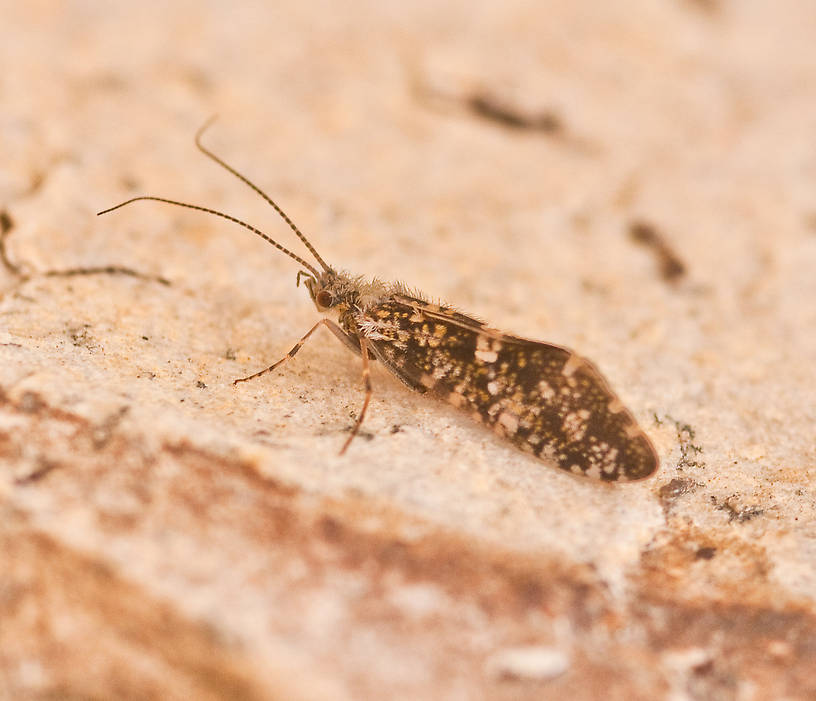
Hex Mayflies
Hexagenia limbata
The famous nocturnal Hex hatch of the Midwest (and a few other lucky locations) stirs to the surface mythically large brown trout that only touch streamers for the rest of the year.
Featured on the forum

Troutnut is a project started in 2003 by salmonid ecologist Jason "Troutnut" Neuswanger to help anglers and
fly tyers unabashedly embrace the entomological side of the sport. Learn more about Troutnut or
support the project for an enhanced experience here.
Little Black Caddisfly
Like most common names,"Little Black Caddis" can refer to more than one taxon. They're previewed below, along with 2 specimens. For more detail click through to the scientific names.
Caddisfly Genus Glossosoma
These are often called Little Black Caddisfly.
The sporadic emergence of these caddisflies diminishes the importance of the freshly emerged adults and pupae, but they have unique periods of vulnerability as larvae during the day and again as diving egg layers at dusk that can make them very important. A taxon can only have one common name attached in the title but this is one of those genera whose species come in a variety of colors and descriptive common names. In the West their bodies generally come in tan to brown shades with matching wings, their wings can be speckled grayish tan or even almost black as with an eastern species. Some western rivers have astounding populations. See Glossosomatidae for more information.

I caught this tiny larva without a case, but it seems to key pretty clearly to to Glossosomatidae. From there, the lack of sclerites on the mesonotum points to either Glossosoma or Anagapetus. Although it's difficult to see in a 2D image from the microscope, it's pretty clear in the live 3D view that the pronotum is only excised about 1/3 of its length to accommodate the forecoxa, not 2/3, which points to Glossosoma at Couplet 5 of the Key to Genera of Glossosomatidae Larvae.
See 2 more specimens...
Caddisfly Species Brachycentrus occidentalis
These are sometimes called Little Black Caddisfly.
Gary LaFontaine tells the story in Caddisflies of how this species came to awareness through rumors of a widespread, intense hatch of an undentified brown and green caddisfly throughout the West. He traveled across the West collecting these flies and determined that they were Brachycentrus occidentalis.
Caddisfly Species Brachycentrus nigrosoma
These are very rarely called Little Black Caddisfly.
This is a smaller, darker cousin of Brachycentrus numerosus.
References
- LaFontaine, Gary. 1981. Caddisflies. The Lyons Press.



